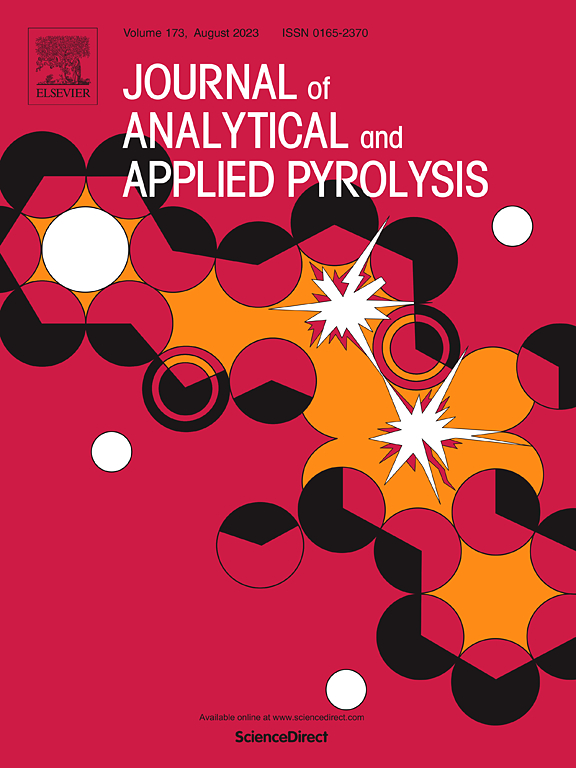通过蒸汽加热在断裂储层中就地转化页岩油的可行性和采收效率:基于热流-化学耦合模型
IF 5.8
2区 化学
Q1 CHEMISTRY, ANALYTICAL
引用次数: 0
摘要
页岩油是一种通过热解油页岩储层中的有机物(如角质)而获得的液态碳氢化合物。有效开采页岩油可以大大缓解石油供应压力。在提出的各种页岩油开采方法中,通过高温蒸汽加热原位转化页岩油是一种很有前景的技术。本研究利用新开发的热流化学数值模拟器建立了一个异质地质模型,详细描述了页岩油储层中不同成分在原位转化过程中的演变。此外,研究还深入分析了裂缝等高渗透通道在这一过程中的流体输送和热量传递作用。与均质储层相比,裂缝在蒸汽输送中起着控制作用。注入蒸汽后,蒸汽通过裂缝在加热井和生产井之间形成优先输送路径。随后注入的蒸汽将优先通过该路径,从而加快储层的加热速度。然而,裂缝分布不均可能导致储层内的有机物热解不完全。此外,我们还发现,生产压力和蒸汽注入率对角质热解以及油气产量有很大影响。过低的开采压力和过高的蒸汽注入率都不利于页岩油的开采。基于这些发现,本研究旨在为具有不同特征的储层制定更合理的加热策略。本文章由计算机程序翻译,如有差异,请以英文原文为准。
Feasibility and recovery efficiency of in-situ shale oil conversion in fractured reservoirs via steam heating: Based on a coupled thermo-flow-chemical model
Shale oil is a type of liquid hydrocarbon obtained through the pyrolysis of organic matter such as kerogen in oil shale reservoirs. Effective extraction of shale oil can significantly alleviate the pressure on oil supply. Among the various methods proposed for shale oil extraction, in-situ conversion of shale oil through high-temperature steam heating is a promising technique. This study employs a newly developed thermo-flow-chemical numerical simulator to establish a heterogeneous geological model and provides a detailed description of the evolution of different components within the shale oil reservoir during the in-situ conversion process. Additionally, the study thoroughly analyzes the role of high-permeability channels, such as fractures, in fluid transport and heat transfer during this process. In comparison with homogeneous reservoirs, fractures play a controlling role in the transport of steam. After injection, steam forms a preferential transport path between the heating well and the production well through the fractures. Subsequent injected steam will preferentially travel through this path, leading to faster heating of the reservoir. However, the uneven distribution of fractures may result in incomplete pyrolysis of the organic matter within the reservoir. Additionally, we found that the producing pressure and the steam injection rate significantly affect the pyrolysis of kerogen and the production of oil and gas. Both excessively low producing pressure and excessively high steam injection rate are detrimental to shale oil extraction. Based on these findings, this study aims to develop more rational heating strategies for reservoirs with different characteristics.
求助全文
通过发布文献求助,成功后即可免费获取论文全文。
去求助
来源期刊
CiteScore
9.10
自引率
11.70%
发文量
340
审稿时长
44 days
期刊介绍:
The Journal of Analytical and Applied Pyrolysis (JAAP) is devoted to the publication of papers dealing with innovative applications of pyrolysis processes, the characterization of products related to pyrolysis reactions, and investigations of reaction mechanism. To be considered by JAAP, a manuscript should present significant progress in these topics. The novelty must be satisfactorily argued in the cover letter. A manuscript with a cover letter to the editor not addressing the novelty is likely to be rejected without review.

 求助内容:
求助内容: 应助结果提醒方式:
应助结果提醒方式:


